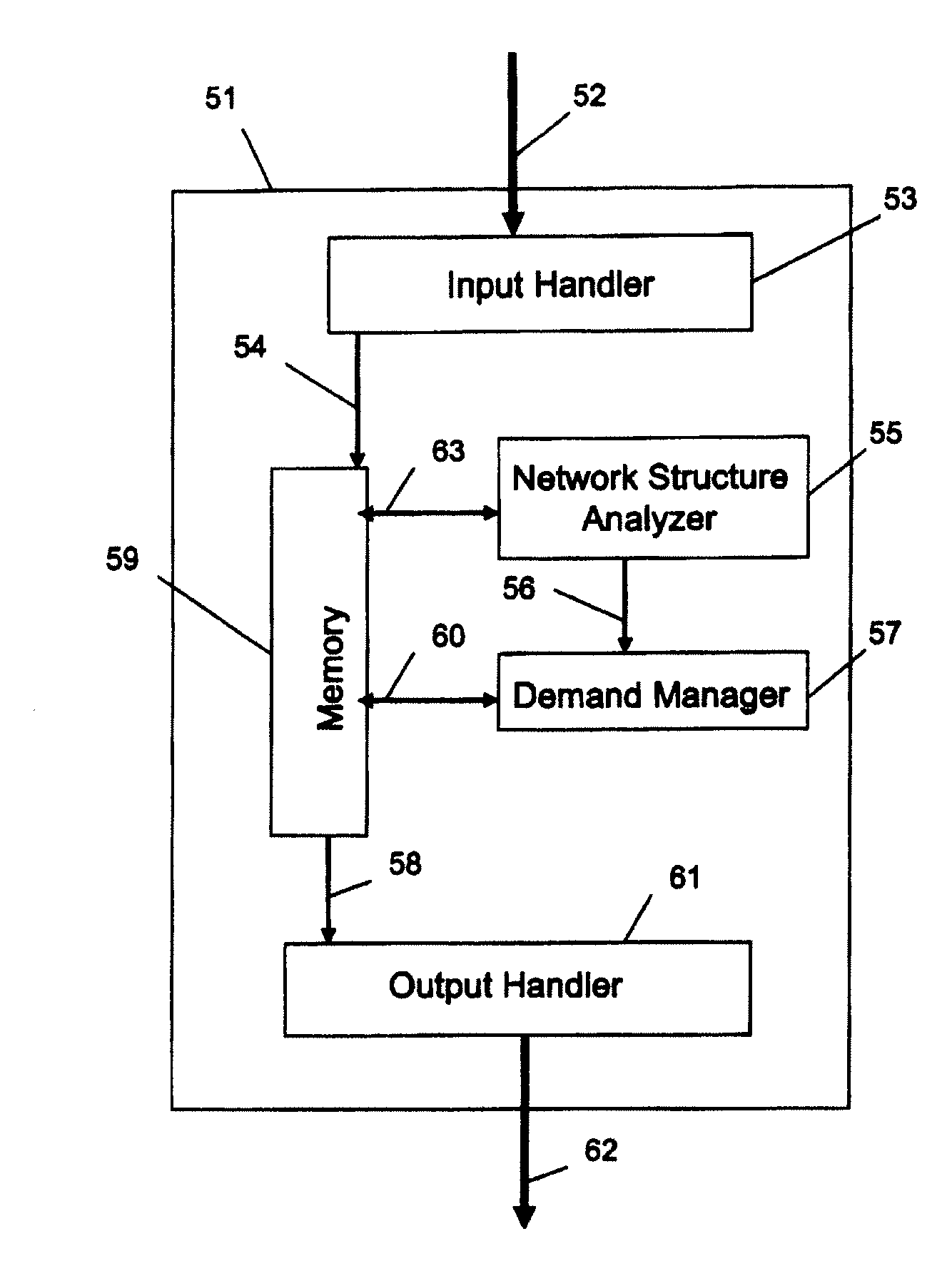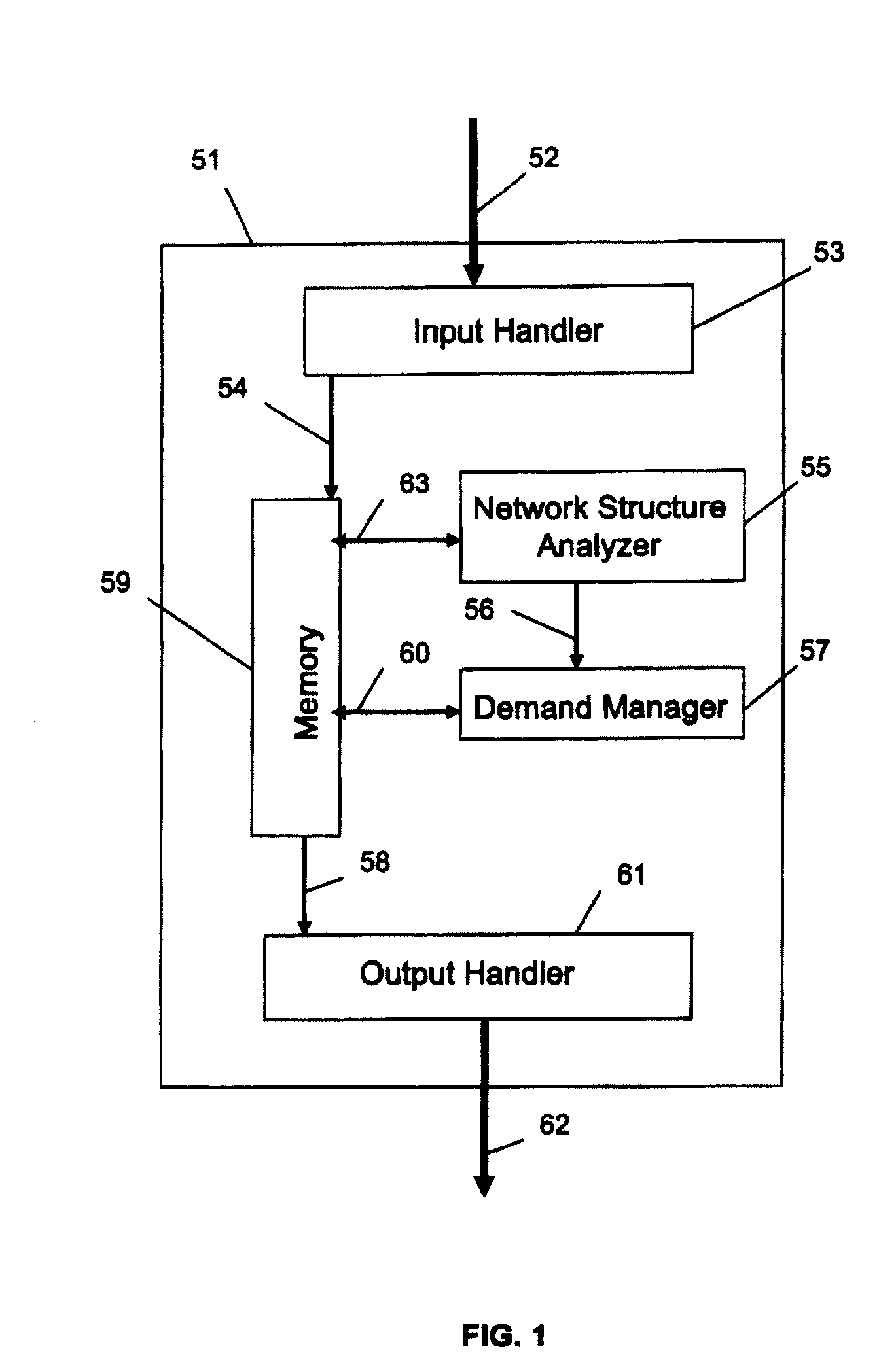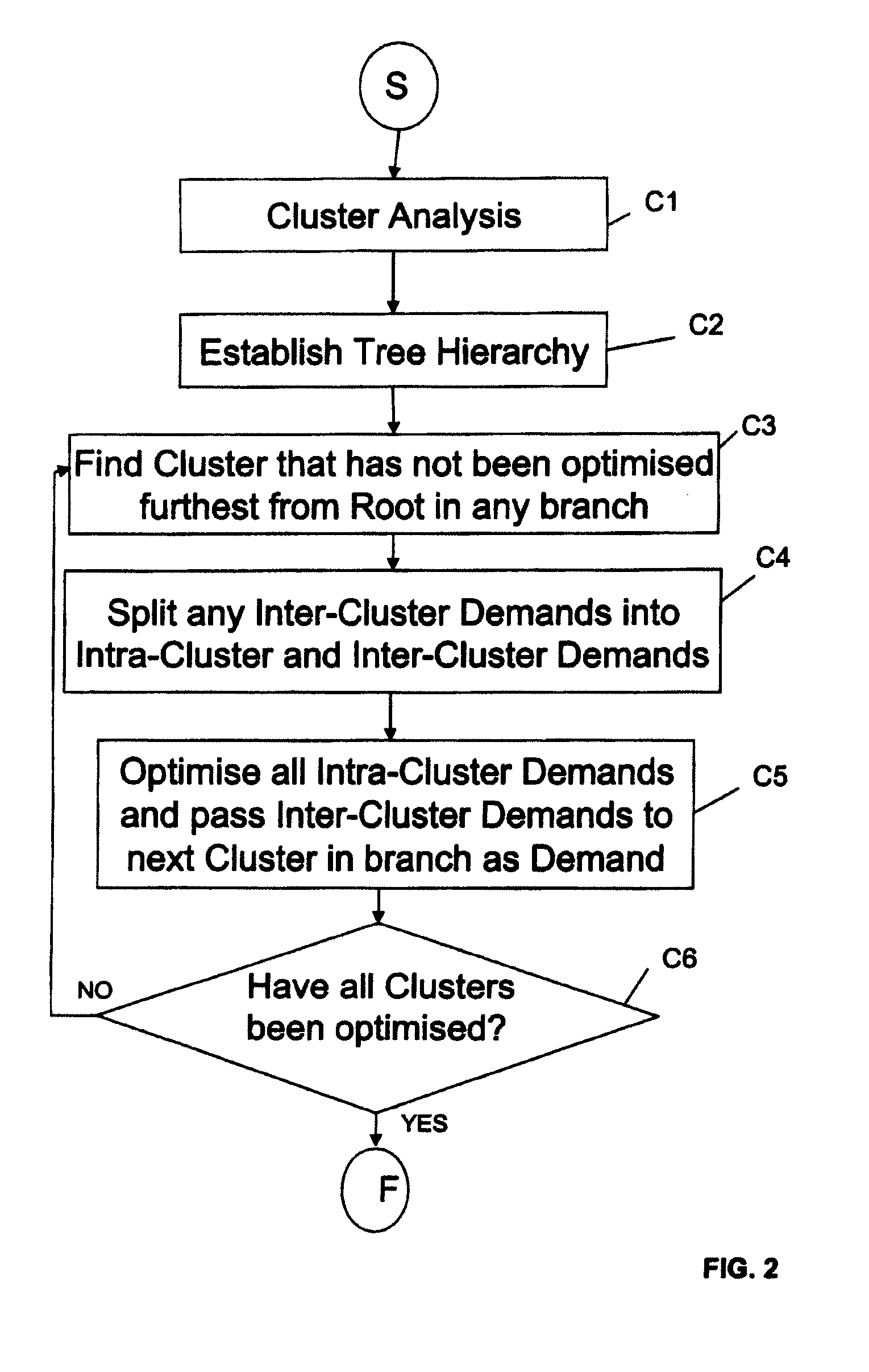Method of Optimizing Routing of Demands in a Network
a network and demand technology, applied in the field of network demand optimization, can solve the problems of limiting the amount of service differential achievable, difficult to split demands across multiple paths without introducing unnecessary packet reordering, and reasonable optimization problems
- Summary
- Abstract
- Description
- Claims
- Application Information
AI Technical Summary
Benefits of technology
Problems solved by technology
Method used
Image
Examples
Embodiment Construction
[0042]Thus, as mentioned above, it is desirable to be able to optimise routing of demands in a telecommunications network in order to increase the capacity of the network. The present invention, in a first embodiment, provides a method and apparatus for carrying out such an optimisation by analysing the network and virtually organizing the routers, or nodes, into clusters, with the clusters then being organised in a hierarchical fashion, with the network “central core” at the root of this hierarchy.
[0043]Thus, FIG. 1 is a schematic diagram showing the architecture of a demand optimizer according to a first embodiment of the present invention. The demand optimizer 51 includes an input handler 53, which receives, via input link 52, details of the network structure and demands to be optimized. The input handler 53 passes the network structure details and the demand to a memory 59 via link 54. A network structure analyser 55 is coupled to the memory 59 via two-way link 63 and performs a...
PUM
 Login to View More
Login to View More Abstract
Description
Claims
Application Information
 Login to View More
Login to View More - R&D
- Intellectual Property
- Life Sciences
- Materials
- Tech Scout
- Unparalleled Data Quality
- Higher Quality Content
- 60% Fewer Hallucinations
Browse by: Latest US Patents, China's latest patents, Technical Efficacy Thesaurus, Application Domain, Technology Topic, Popular Technical Reports.
© 2025 PatSnap. All rights reserved.Legal|Privacy policy|Modern Slavery Act Transparency Statement|Sitemap|About US| Contact US: help@patsnap.com



